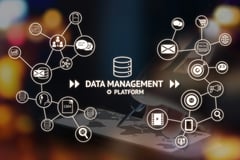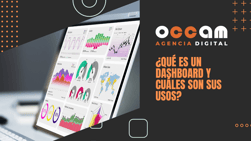What is data management and what are its functions?
Index Content
Data management is a management discipline, which refers to data. Its process consists of collecting, verifying, storing, analysing, protecting and processing data in order to make it available to companies and make better use of it. Now we'll tell you more!
what are the benefits of good and efficient data management?
- Increased productivity: no more time wasted searching for information - reliable, quality data is available to teams who know where to find it and can easily understand it.
- Cost savings: there is no duplication of data, so data storage and processing costs are reduced and time is saved in research and data analysis processes.
- Increased ability to adapt to market expectations: if you are slow to make strategic decisions that will allow you to adapt to the market, you will be quickly overtaken by the competition. Having access to the right data at the right time avoids this difficulty and will grow your business.
- Better risk management and reduced data loss: you control your data by knowing where and how it is stored and exchanged, and you are able to minimise the risk of data loss or even data leakage by having a data management plan in place.

what are the main functions of data management?
- Correct valuation of data as the company's capital.
- Ensuring the quality and reliability of data. The aim of data management is not just to collect data for the simple pleasure of accumulating it. You have to be able to do something about it: data management requires data that is reliable, of high quality and therefore useful.
- Avoid data entry or data processing errors.
- Avoid duplicates.
- Losing data because they have been moved without precaution.
- Ensure data traceability.

Top tips for correct and effective data management
- Takeinto account the data lifecycle. The data lifecycle consists of identifying where the data is located in order to determine where there are potential vulnerabilities. Knowing these vulnerabilities allows you to implement good practices and systems that guarantee the confidentiality and security of your data.
- Integrate data: You should consolidate data in the same place, i.e. in a single database, to make the data accessible to the whole company and facilitate its processing.
- Have a good decision support tool. Being able to analyse and exploit data is crucial to make timely and relevant strategic decisions. Lack of information increases the likelihood that decisions made will not correspond to expectations. Having access to this data also allows you to anticipate needs and be one step ahead for correct decision making.
- Ensure compliance with regulations. When we talk about Data Management, it is understood that we are referring to the process of collecting, storing, processing and securing data. This must be done within the framework of Spanish and European law, which regulates the collection and use of data.
- Appoint a data manager. The data manager should be the king of data management within the company. He/she should understand, synthesise and respond to data management needs; establish big data processes in the company; define common tools to simplify data processing; and ensure the relevant exploitation of data.
Data management tools
Now that you are well into the world of data management, it is time to get to know some of the most commonly used data management tools. Here are a few of them:
-Looker - The Looker tool is capable of generating reports that provide good visualisation. It allows you to explore, analyse and share these reports in different formats, which suit different requirements. There is also the option of a cloud tool, which offers the ability to collect data from different sources.
-Profisee is a simple and easy-to-use multi-domain data management tool that includes data management functions while supporting a wide range of sources and formats.
-Cuadro is an interactive visualisation platform that enables companies to view and understand their data and therefore gain new insights quickly and easily. This tool converts raw data into an easy-to-analyse format. It also offers data blending, intelligent analysis and worksheets.
-Dell Boom - Dell Boomi is an intelligent and flexible data management solution that allows users to easily and quickly bring data and applications together across devices, channels and platforms.
Data is critical to business, so take care of it and explore it - thanks for reading!





